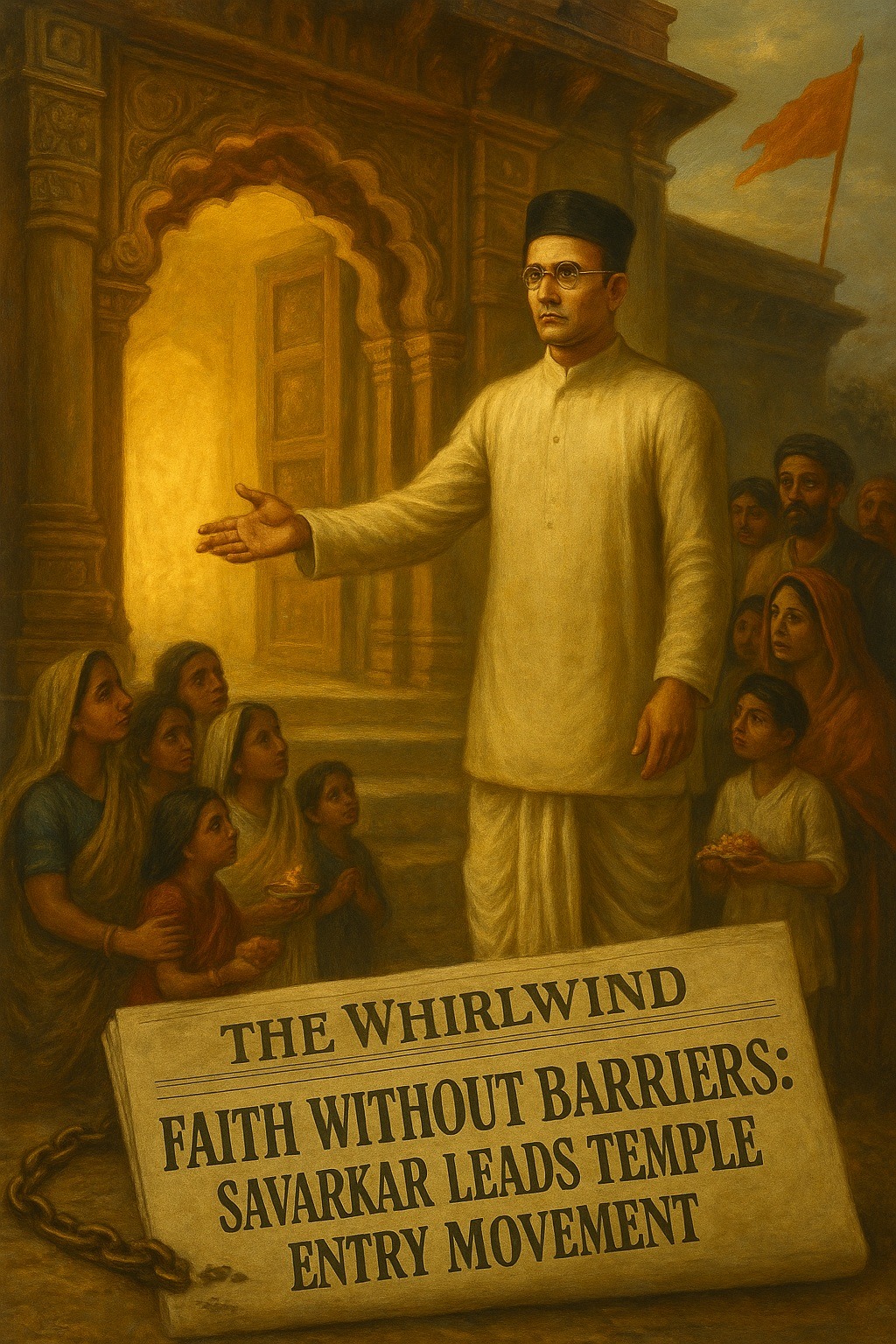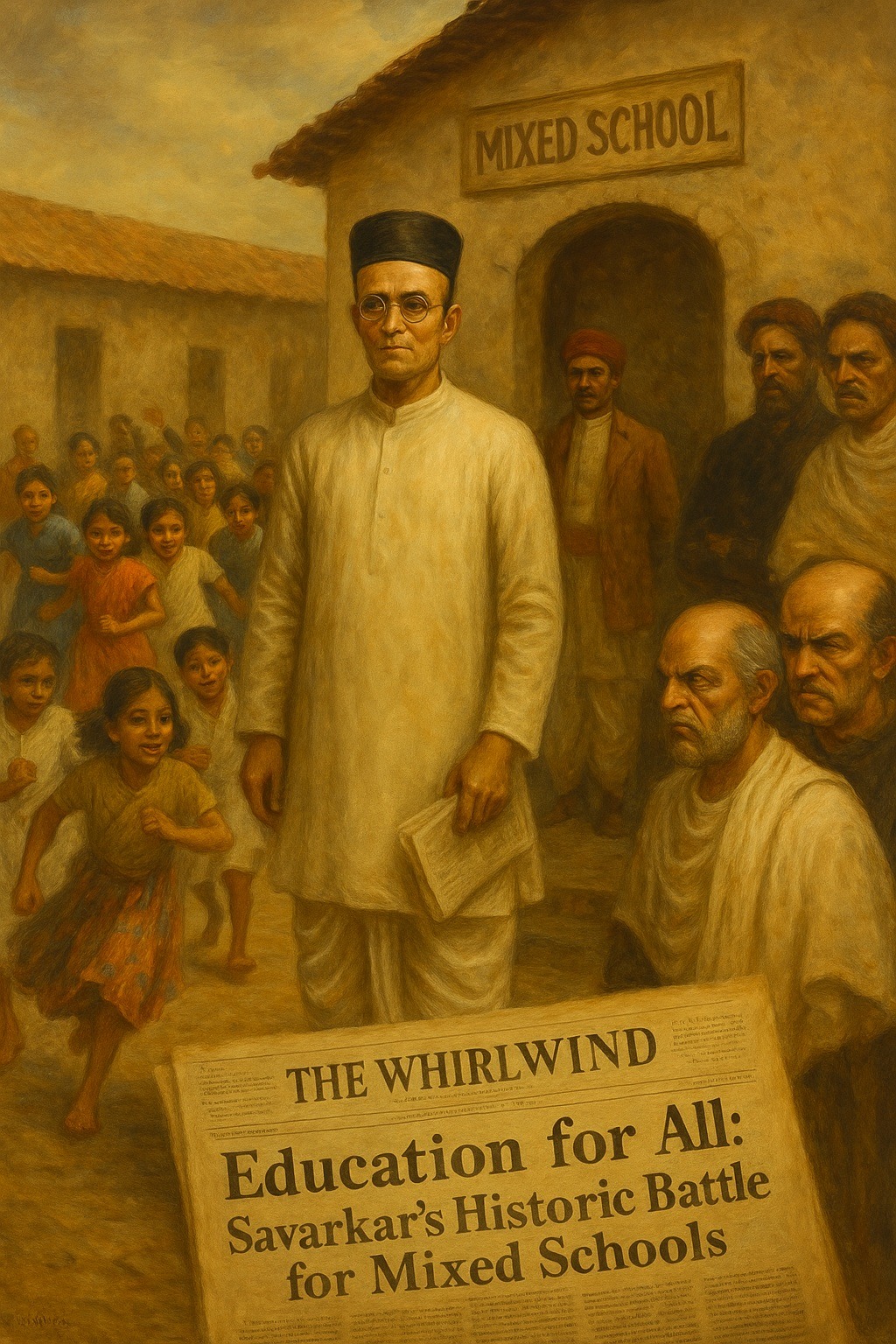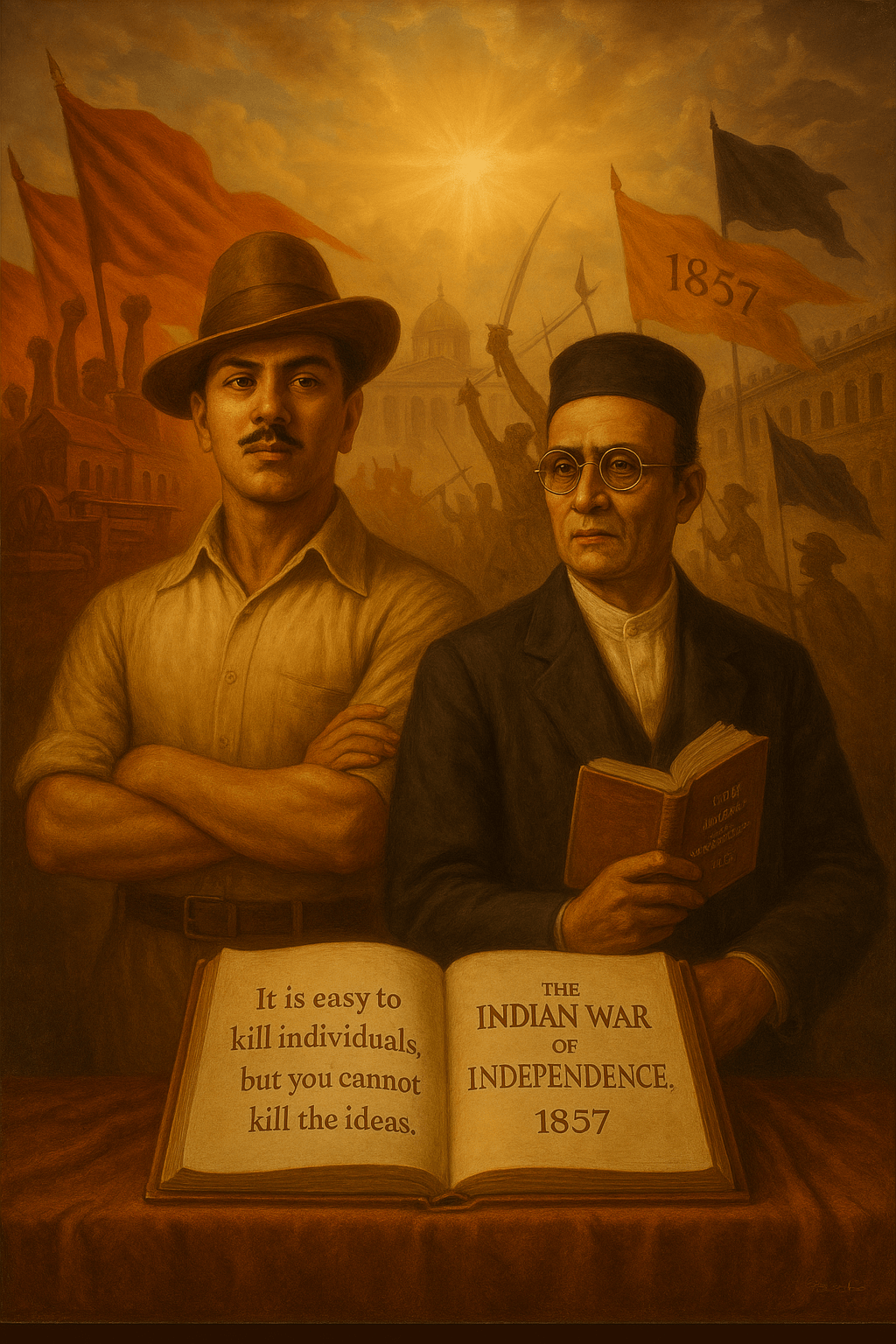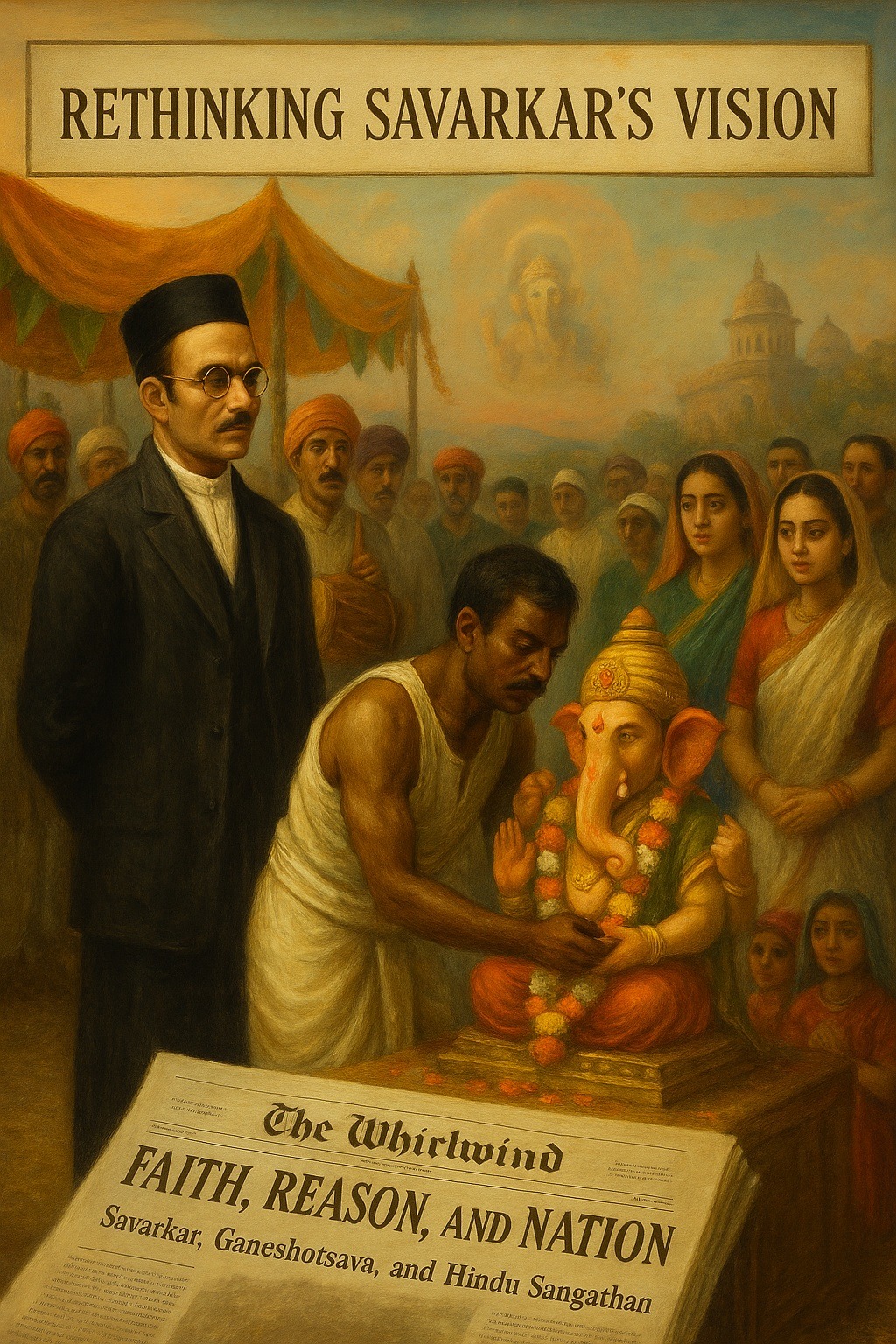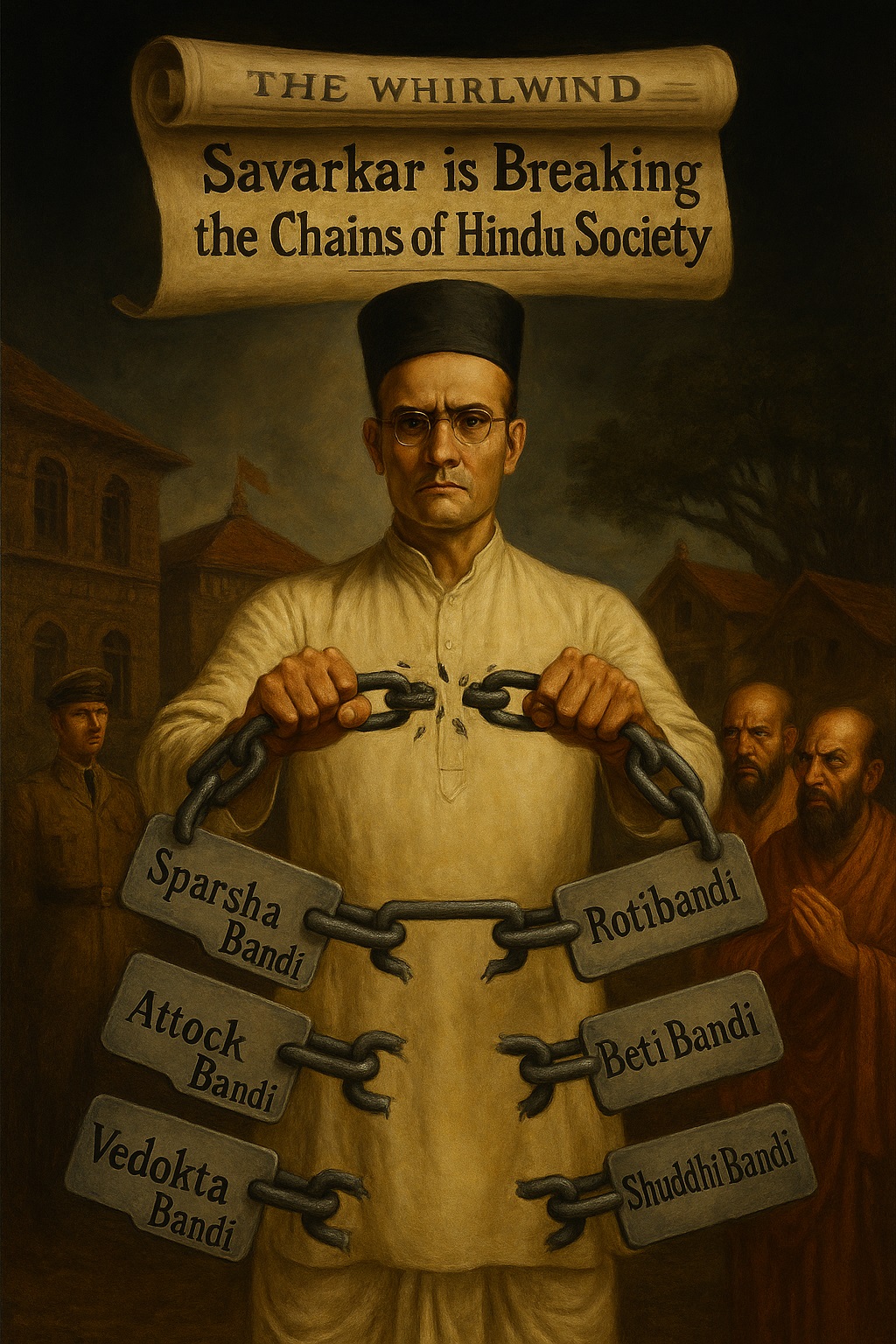Tag: Ratnagiri
-
One of Vinayak Damodar (Veer) Savarkar’s most significant contributions to social reform in India was his active fight against the deeply ingrained practice of untouchability. Besides Savarkar’s Vitthal Temple Entry Movement, another remarkable milestone in this campaign was the founding of the Patit-Pawana-Mandir (Temple of the Redeemed) in Ratnagiri, a powerful symbol of inclusion and…
-
Savarkar’s Struggle Against Untouchability, Part III In pre-colonial India, the caste system established a deeply entrenched hierarchy that confined individuals to rigid social categories. Among its harshest expressions was the exclusion of the so-called Untouchables from Hindu temples. The larger and wealthier the temple, the more uncompromising the restrictions. For centuries, such practices persisted unchallenged,…
-
Savarkar’s Struggle Against Untouchability, Part II Among the many aspects of Vinayak Damodar (Veer) Savarkar’s reformist thought, his campaign against untouchability stands out as a crucial yet often neglected chapter. During his confinement in Ratnagiri, Savarkar directed his intellectual and organisational energy toward addressing what he regarded as one of the gravest internal weaknesses of…
-
Savarkar’s Struggle Against Untouchability, Part I Vinayak Damodar (Veer) Savarkar is often celebrated as one of India’s most fearless revolutionaries and intellectual architects of national liberation. Yet, beyond his political vision and militant struggle for independence, there lies another profound dimension of his legacy – his fight against untouchability. During his years of confinement in…
-
Every year, on 28 September, India remembers the birth of Bhagat Singh (1907–1931), one of the most iconic revolutionaries of the freedom movement. His fiery courage, intellectual depth, and ultimate sacrifice at the age of just 23 continue to inspire generations. On such an occasion, it is worth revisiting not only Bhagat Singh’s own ideas…
-
Religious Tradition and Political Struggle Traditional Roots of the Festival Anant Chaturdashi, observed on the 14th day of the bright fortnight of Bhadrapada (August–September), is one of India’s important Hindu festivals. Traditionally dedicated to Lord Vishnu as the infinite (Anant) sustainer of the universe, it revolves around the tying of the sacred Anant Sutra –…
-
Vinayak Damodar (Veer) Savarkar, a revolutionary thinker and social reformer, played a crucial role in challenging the rigid traditions of Hindu society. During his time in Ratnagiri, he maintained close contact with people from all sections of society and received widespread support—except from one particular group: the Hindu orthodox traditionalists. His relationship with them was…
-
When we think of Ganesh Chaturthi (Ganeshotsava), the name of Bal Gangadhar (Lokmanya) Tilak often comes first. In the 1890s, Tilak had transformed a private household ritual into a public celebration — a powerful tool for awakening nationalist spirit and resisting colonial rule. But three decades later, in 1925, another revolutionary, Vinayak Damodar Savarkar (Veer…
-
When we think of the modern Ganesh Chaturthi festival (Ganeshotsava), one name inevitably comes to mind: Bal Gangadhar (Lokmanya) Tilak, who in the 1890s transformed it from a private household ritual into a public celebration of unity and resistance against colonial rule. But what about Vinayak Damodar (Veer) Savarkar? Despite organizing a Pan-Hindu Ganesh Utsav…
-
Social-Reformist Dimension of Hindutva, Part 7 Veer Savarkar’s time in Ratnagiri, a period of enforced confinement following his years in the Andamans, proved to be a pivotal chapter in his focus on social reform. Released from prison in 1924, he was subjected to stringent restrictions, including a ban on political activity and a mandate to…


